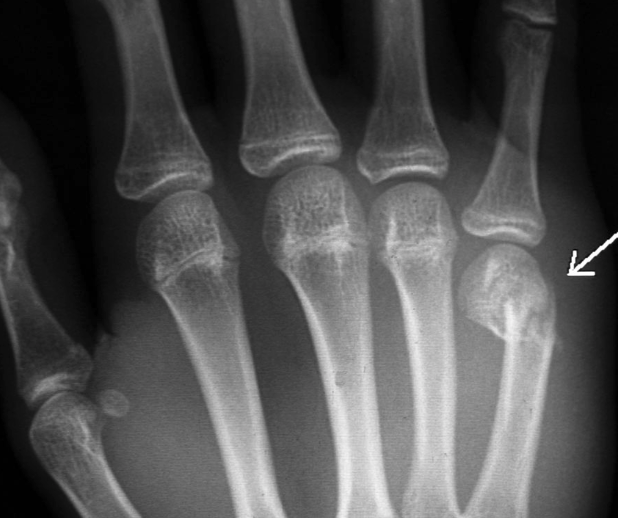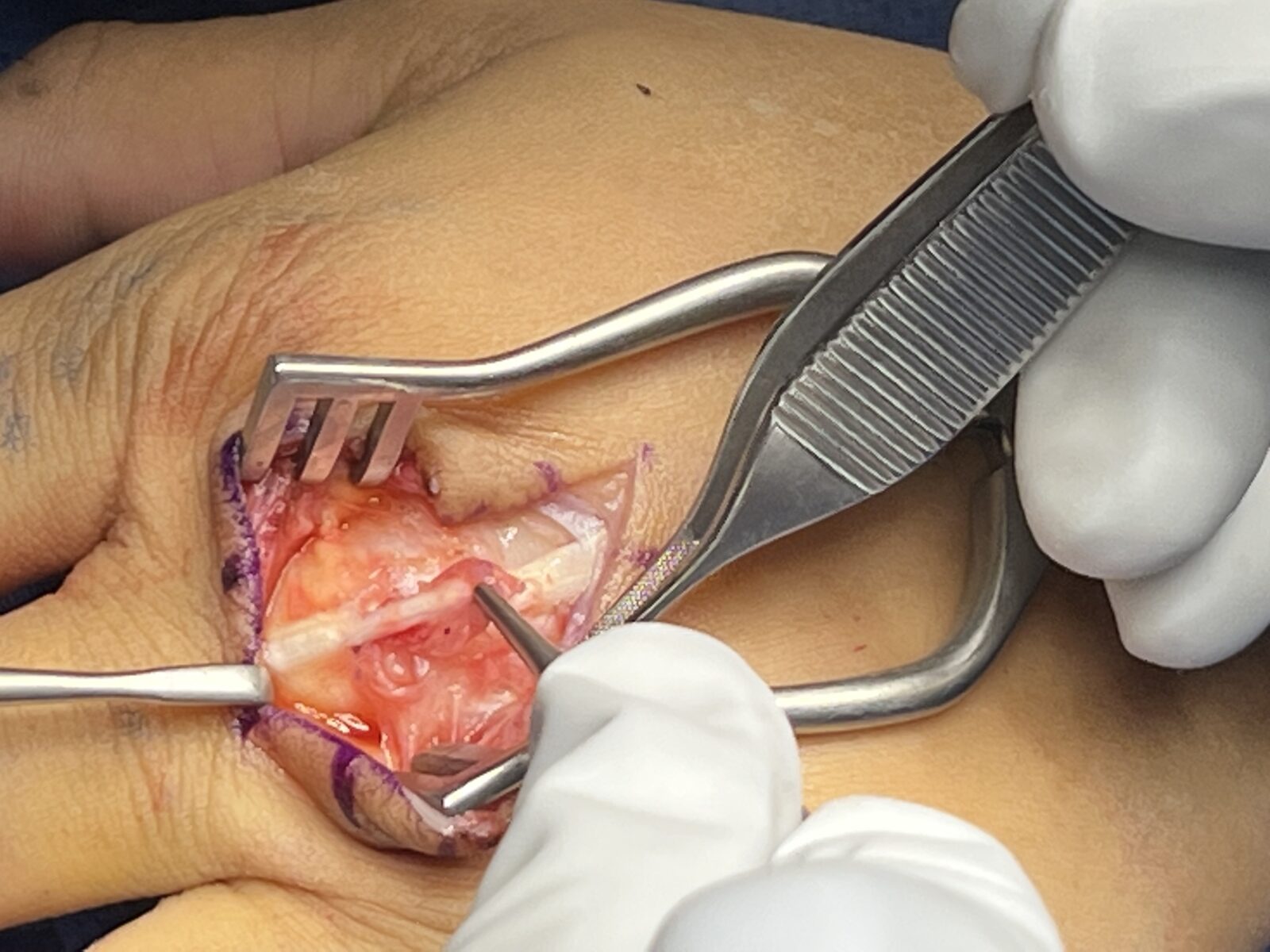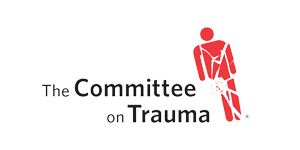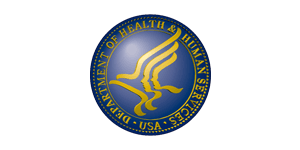Carpal Tunnel Syndrome
What is carpal tunnel syndrome?
Carpal tunnel syndrome happens when the main nerve that runs through your wrist (the median nerve) due to swelling and inflammation becomes squeezed within your carpal tunnel, the group of wrist area bones. Your carpal tunnel is topped by a thick ligament which creates a firm boundary for the tissues inside the tunnel. The ligament can push down on the median nerve, causing wrist pain, tingling, numbness, and weakness in the hand. Symptoms tend to worsen over time, and it may eventually be difficult to use your hand normally if carpal tunnel is untreated.
What causes carpal tunnel syndrome?
Multiple factors may contribute to carpal tunnel syndrome to develop such as:
- Female gender
- Repetitive wrist movements
- Extended periods of wrist flexion
Diabetes, rheumatoid arthritis, and thyroid disease increase the risk of carpal tunnel syndrome, and pregnant women are more likely to develop it due to hormone surges.
At Katy Hand & General Surgery, in Houston, Texas, leading hand surgeon Faranak Vossoughi, MD, FACS, specializes in advanced carpal tunnel syndrome treatments like minimally invasive endoscopic carpal tunnel release. This procedure can permanently stop carpal tunnel pain, tingling, and numbness in your hands.
You can schedule a consultation quickly. Call the office or click on the online scheduling tool now.
Ulnar Nerve Compression / Cubital Tunnel Syndrome
What is cubital tunnel syndrome?
Cubital tunnel syndrome occurs when there is inflammation and swelling around the ulnar nerve that runs in the cubital tunnel in your elbow. The inflammatory tissue compresses the ulnar nerve, leading to painful and uncomfortable symptoms in your elbow, weakness in grip function, and tingling and numbness in your ring and small fingers.
While cubital tunnel syndrome is a completely separate condition from carpal tunnel syndrome, the symptoms are similar. Cubital tunnel syndrome causes symptoms in the elbow, arm, and part of your hand while carpal tunnel causes symptoms in your wrist and your hand.
What causes cubital tunnel syndrome?
Cubital tunnel syndrome can occur with a direct injury to the elbow area, repetitive pressure on your elbow, prolonged elbow bending while asleep, or problems with the anatomy of the elbow. Arthritis can also lead to problems like bone spurs in the elbow, which can then cause cubital tunnel syndrome.
At Katy Hand & General Surgery, in Houston, Texas, leading hand surgeon Faranak Vossoughi, MD, FACS, may recommend either conservative treatment in form of physical therapy or in patients with more advanced findings, surgical release of ulnar nerve may be recommended.
You can schedule a consultation quickly. Call the office or click on the online scheduling tool now.
Radial Tunnel Syndrome
What is radial tunnel syndrome?
Radial tunnel syndrome is due to compression of the radial nerve in the forearm. Repetitive motion and overuse of the forearm and wrist may cause the symptoms. Sometimes due to continuous compression of the radial nerve, radial nerve palsy will develop.
What are symptoms of radial tunnel syndrome?
Pain in the forearm, elbow, and wrist are common symptoms. In the case of radial nerve palsy, wrist extension would be weak and difficult to perform,
After performing a complete physical exam, Dr. Vossoughi completes the diagnosis by performing EMG/NCV nerve studies. Treatment would be in form of oral anti-inflammatory medications, steroid injection, or in some cases surgical release of the radial nerve.
You can schedule a consultation quickly. Call the office or click on the online scheduling tool now.
Ganglion Cyst or Mucus Cyst of Fingers
What is a ganglion cyst?
A ganglion cyst is a benign fluid-filled bump that often develops on the wrist or fingers, around joints, or tendon sheaths. The tissue balloons upward and fills with a thick clear gel-like liquid to form the bump.
What are the symptoms of a ganglion cyst?
The most obvious sign of a ganglion cyst is a bump on the wrist or finger that may change in size. Due to the pressure caused by fluids, some patients may develop pain. However, some patients do not have any discomfort.
At Katy Hand & General Surgery, Dr. Vossoughi offers multiple approaches to ganglion cyst treatment, including observation or cyst removal either as an in-office procedure or in the surgery center.
You can schedule a consultation quickly. Call the office or click on the online scheduling tool now.
Tigger Finger or Trigger Thumb
What is a trigger finger?
Trigger finger is a condition in which one of your fingers (usually the ring finger) bends, and it’s hard to straighten it. This condition can also affect the thumb, known as trigger thumb. When you straighten or bend your affected finger, it can make a popping feeling, similar to that of which the trigger of a gun, which is why it was named trigger finger. Trigger finger may cause pain, and swelling in the finger. In the most severe cases of trigger finger, your finger may get stuck in a bent position.
What causes trigger finger?
You’re more likely to develop trigger finger if you have diabetes or rheumatoid arthritis. If your occupation or hobbies require you to perform repetitive gripping motions or use forceful hand movements for long periods, you may have a higher risk of developing trigger finger. Women are up to six times more likely to develop trigger finger than their male counterparts.
At Katy Hand & General Surgery, in Houston, Texas, leading hand surgeon Faranak Vossoughi, MD, FACS, may recommend either steroid injection or surgical release of your trigger finger. Ready to move your finger without pain again?
You can schedule a consultation quickly. Call the office or click on the online scheduling tool now.
Boxer’s Fracture

What is Boxer’s fracture?
A Boxer’s fracture is a fracture in the neck of the small-finger metacarpal bone. The most common cause is when hitting an object with a clenched fist. Less commonly, this fracture may also occur from getting the hand crushed.
What are the symptoms of Boxer’s fracture?
Most people have pain and swelling in the hand. The small finger may be crooked or deformed. The pinky finger may be difficult to straighten or sometimes can cross over the ring finger.
At Katy Hand & General Surgery, we will obtain on-site x-rays of your hand. Treatment varies depending on the degree of fractured bone dislocation. Dr. Vossoughi would recommend either a splint/cast or surgical treatment. If a surgical procedure is indicated, Dr. Vossoughi would perform a state-of-the-art surgical procedure to minimize your recovery time.
You can schedule a consultation quickly. Call the office or click on the online scheduling tool now.
Hand & Finger Fractures
What are hand metacarpal/ finger phalangeal fractures?
Fracture or broken bone occurs when force is applied to the hand or fingers causing breakage of the bone. There are two types of fractures, stable and unstable fractures. Stable fractures are usually treated with a cast/splint. Unstable fractures are treated surgically using pins, wires, or small screws and plates.
What are the symptoms of fractures?
Pain, swelling, stiffness, and sometimes deformity are common symptoms.
At Katy Hand & General Surgery, Dr. Vossoughi evaluates you with a thorough exam and by obtaining on-site X-rays. She would determine which type of treatment is most beneficial for you. Due to stiffness in fingers, hand therapy following treatment is necessary in most cases.
You can schedule a consultation quickly. Call the office or click on the online scheduling tool now.
Skier’s Thumb
What is Skier’s thumb?
If your thumb hurts after a fall, it may be due to an ulnar collateral ligament ( UCL) injury or a so-called skier’s thumb. These acute injuries are common in many athletes playing sports such as football, soccer, downhill skiing, and snowboarding. Chronic injuries due to attenuation of the ligament under repeated stress are called Gamekeeper’s thumb. Falls and injuries to the thumb may also cause radial collateral ligament ( RCL) partial or complete tear.
What are symptoms of Skier’s thumb?
Intermittent pain and weakness in thumb grip function are the most common symptoms. Diagnosis relies upon thumb metacarpal bone radial-ulnar stress exam and MRI studies.
Dr. Vossoughi would perform a thorough exam. After obtaining in-house X-rays, an MRI may be recommended in some cases. Depending on the degree of the injury, treatment would involve either splinting alone or anatomic repair or reconstruction which reliably restores the essential function of the collateral ligament. Patients who do not receive any treatment have a risk of developing arthritis of the thumb metacarpal joint.
You can schedule a consultation quickly. Call the office or click on the online scheduling tool now.
Thumb Basilar Joint Arthritis
What is thumb base arthritis?
Thumb basal joint arthritis is a common form of arthritis found in the base of the thumb and may also feel similar to wrist pain. It is most commonly due to osteoarthritis or degenerative arthritis which is a process of joint cartilage deterioration.
What are the signs and symptoms of thumb arthritis?
Pain in the base of the thumb when gripping, pinching, weakness, and swelling of the joint are common symptoms.
Dr. Vossoughi confirms the diagnosis by performing a physical examination and performing in-office x-rays. Treatment is based on the severity of arthritis. Alternatives for treatment are oral anti-inflammatory medications or steroid injections into the joint. In the case where conservative treatment fails, Dr. Vossoughi performs Ligament Reconstruction Tendon Interposition (LRTI) procedure utilizing the most advanced techniques to reconstruct the joint which provides great pain relief in most patients.
You can schedule a consultation quickly. Call the office or click on the online scheduling tool now.
Boutonnier’s Deformity
What is Boutonnier’s deformity?
A Boutonniere deformity is a type of bent finger that may occur due to several reasons. It can happen from a cut of the tendon on the back of the finger or due to tearing or weakening of the same tendon due to an injury or from a disease like rheumatoid arthritis.
What are symptoms of Boutonnier’s deformity?
An injury of the tendon on the back of the middle joint will result in difficulty straightening that joint. If not treated, the deformity may become worse over time or it may result in stiffness.
Dr. Vossoughi may recommend x-rays of your hand and depending on the type of injury, she may recommend splinting or surgical repair. Splinting can be used, particularly early after injury. Although, splinting alone may not give a good result in a case where the deformity is due to rheumatoid arthritis.
You can schedule a consultation quickly. Call the office or click on the online scheduling tool now.
Dupuytren’s Contracture
What is Dupuytren’s contracture?
Dupuytren’s contracture is a hand condition that can occur in one or both hands. Dupuytren’s contracture is caused by a buildup of collagen that forms a rope-like cord beneath the skin of the palm. As a progressive condition, it may worsen over time, and may eventually limit your ability to move or straighten your fingers. Dupuytren’s contracture is most common in men who are of northern European descent.
What are the symptoms of Dupuytren’s contracture?
- Positive tabletop test – meaning not being able to lay your hand flat on a table.
- Difficulty doing daily tasks such as gripping a mug, washing your face, brushing your hair, putting your hand in your pocket, or shaking hands because of a contracted finger or fingers
At Katy Hand & General Surgery, Dr. Vossoughi would recommend the best treatment for you. She uses the most recent no-incision technique by injecting a Xiaflex injection into the cord. This procedure is performed in a well-equipped and pleasant surgical suit as an in-office procedure. In the case of very advanced Dupuytren’s contracture, open fasciectomy may be required.
You can schedule a consultation quickly. Call the office or click on the online scheduling tool now.
Tendon Injury or Laceration

What is a tendon injury?
Tendon ruptures or lacerations are usually caused by either a cut, forceful movement, or trauma. Disruption in the tendon would lead to a lack of movement in a finger, parts of the hand, wrist, forearm, or upper arm.
What are symptoms of tendon injury?
Tendons in the hand are in close proximity to nerves and vessels. If the injury is due to laceration, it may be accompanied by large amounts of bleeding, tingling, and numbness. Lack of movement may be in the finger or wrist. In case of biceps tendon rupture, there would be a feeling of weakness in the forearm when bending the elbow. Complete tendon ruptures or lacerations would not heal spontaneously.
Dr. Vossoughi would perform surgical repair or tendon reconstruction to restore the function of the upper extremity. Recovery is often several weeks, including splinting and hand therapy.
You can schedule a consultation quickly. Call the office or click on the online scheduling tool now.
Nerve Injury or Damage
Nerves are wiring systems in the body, connecting and carrying messages between your brain, spine, and the rest of the body. If the nerve is cut, the messages are no longer able to be transmitted. Nerve damage can be in the form of a cut, crush, or stretch.
What are the symptoms of nerve damage?
- Numbness
- Weakness
- Loss of function
- Pain
How to diagnose a nerve injury?
Dr. Vossoughi will perform a thorough exam, she will ask about what you are experiencing and how long you have had symptoms. She may order a Nerve Conduction Velocity (NCV) and Electromyography (EMG) study.
How is a nerve injury treated?
Microsurgery technique, using a microscope is the best way of repairing the nerves. Dr. Vossoughi is trained and certified in microsurgery from The MITIE Institute and St. Joseph Hospital in Houston.
Some nerve injuries may improve spontaneously but more severe injuries can require nerve repair or other interventions. Nerves do not heal like other areas in the body. A nerve repair recreates the tunnel for nerve fibers to grow back through that tunnel.
In the case of a sharp short-segment nerve injury, a direct repair may be possible. In case the nerve is crushed, torn, or invaded by a tumor, direct repair may not be possible, a nerve graft may be used to connect the nerve endings. The results are dependent on the type of nerve injury, age, health status, and time elapsed between injury and repair. Old nerve injuries are likely to be irreversible even with nerve repair.
Nerve fibers grow slowly, about one millimeter per day or one inch per month. It may take many months to years for a nerve to grow from where it is injured to the target area. You may experience pain or a “pins and needles” sensation along the course of the nerve during healing time. Hand therapy may be indicated to mobilize your joints while the nerve is growing.
You can schedule a consultation quickly. Call the office or click on the online scheduling tool now.
Hand/Finger Infection
Skin is the largest organ in the body protecting humans from all small organisms in the environment. Even small skin scrapes may let bacteria into the soft tissue and cause serious infections. Skin infections spread very fast on hands, especially in patients with diabetes, and rheumatoid arthritis.
Hand infections should be treated quickly due to the risk of spreading to tendon sheaths causing irreversible damage. Signs of infection in hands and wrists are swelling, redness, pain, and stiffness in fingers, and wrist.
If you have the above symptoms, you must be seen by a physician immediately. Please do not hesitate to contact our office to be evaluated by Dr. Vossoughi. Depending on your symptoms, Dr. Vossoughi may treat you with antibiotics or surgical drainage of the infected area.
We can also address the following:
- Acute tenosynovitis
- Chronic tenosynovitis
- Other infections-felon
You can schedule a consultation quickly. Call the office or click on the online scheduling tool now.
Hand Tumors / Bumps
Lumps and bumps are very common on hands and wrists. The most common type is a ganglion cyst. One common form of soft tissue tumor in the hands is a giant cell tumor. This is a benign tumor, that if not removed, would grow in size and generally needs to be removed surgically.
Other types of tumors include bone and cartilage tumors. Skin tumors such as squamous cell carcinoma, melanoma, and basal cell carcinoma are also not uncommon in hands and wrists.
Dr. Vossoughi would evaluate your tumor, by performing a careful exam and utilizing advanced imaging techniques. She will then determine the best approach to remove the tumor in your hand and wrist.
We can also address the following:
- Soft tissue tumors and bumps
- Skin and bone tumors
You can schedule a consultation quickly. Call the office or click on the online scheduling tool now.
Nail & Nailbed Injuries
Any type of pinching, or crushing such as catching the fingertip in a door or a sharp cut to the fingertip may result in a nail bed injury. Patients with nailbed injuries may also have a fractured bone.
What is the treatment for nail bed injury?
X-rays may be taken to check for possible bone fractures. Special attention is needed for nailbed injuries with bone fractures as these are considered open bone fractures and there is a risk of infection. Nailbed injuries not properly treated may cause uneven nail growth.
Dr. Vossoughi will examine your injured finger to determine if nail bed repair is indicated. Nail bed repair would usually be performed in our in-office surgical suite under local anesthesia.
You can schedule a consultation quickly. Call the office or click on the online scheduling tool now.
Hand Burns
When the skin comes in contact with hot objects, or certain chemicals, cell death may occur. The severity of the injury depends on the intensity of heat, and the amount of time the hot object or chemical has been in contact with the skin. Special attention should be paid to hand and wrist burns because the skin on the back of the hand is very thin and the tendons located directly under the skin may become exposed and injured easily. Also, another danger is that during the process of healing, skin contracture may cause a restricted range of motion and stiffness in the fingers.
If you have developed skin burns due to heat or chemicals, contact a physician immediately. Call our office for an appointment for an evaluation. Dr. Vossoughi has several years of experience in treating many patients with skin burns with great results.
You can schedule a consultation quickly. Call the office or click on the online scheduling tool now.
Hand Bites
The most common bites are dog bites, cat bites, and human bites. In Texas, snake and spider bites are also common. A major complication of animal bites is infection and even life-threatening problems. Early and proper treatment is the key to preventing complications.
What are the symptoms of an infected animal bite?
- Redness and even red streaks up in the forearm and upper arm
- Swelling
- Warmth
- Pain
- Drainage from the wound
- Fever
- Fatigue
If these develop, you should seek emergency treatment in your physician’s office or the emergency room. You may need vaccination against Tetanus and/or Rabies.
Dr. Vossoughi would offer treatments such as oral or IV antibiotics. The latter requires admission to the hospital. For serious infections, surgical treatment would be advised.
You can schedule a consultation quickly. Call the office or click on the online scheduling tool now.
Raynaud’s Disease / Cold Hand Disease
Blood circulation to the hands is provided by two arteries, radial and ulnar arteries. In wintertime, as the temperatures drop, it is expected to develop cold hands and feet. But cold weather can become very difficult for some people with Raynaud’s disease. Cold weather triggers constriction (narrowing) of the arteries. This phenomenon is different than vaso-occlusion causing necrosis of fingers due to vascular disease.
What are the symptoms of Raynaud’s Disease?
The fingers turn white and blue in the cold weather and once warmed up they turn red. This process is extremely painful.
Make a consultation appointment with Dr. Vossoughi to determine the cause of your problem.
You can schedule a consultation quickly. Call the office or click on the online scheduling tool now.
Mallet Finger
What is a mallet finger?
A mallet finger is an injury to the extensor tendon that straightens your finger. The finger droops downwards at the very end of your finger, and it’s impossible to fully straighten the affected finger because the extensor tenor is at least partially detached. The injury can cause pain, swelling, and bruising.
How does mallet finger happen?
Usually, this injury happens when you jam your finger, leading to a rupture ( extensor tendon tearing) at the end of your finger. Sometimes a bone fracture can occur simultaneously. It’s sometimes called “baseball finger.”
At Katy Hand & General Surgery, Dr. Vossoughi examines your finger carefully. This includes reviewing the details of your accident and obtaining X-rays in the office to determine whether you have experienced a bone fracture at the same time as the tendon injury. Depending on the type of injury, you may need to be treated with a finger splint or surgical repair. In the case where surgical repair is indicated, Dr. Vossoughi uses a variety of surgical techniques and the most advanced surgical protocols to minimize your discomfort and promote rapid healing.
You can schedule a consultation quickly. Call the office or click on the online scheduling tool now.
Foreign Bodies and Splinters
Most people have experienced foreign bodies or splinters in their hands. Sometimes the foreign body becomes a sore area in your hand that is bothersome every time the area is touched or rubbed. Foreign bodies may cause inflammation, infection, and the formation of an epidermal cyst or pyogenic granuloma.
Wood slivers and thorns may cause inflammation, with symptoms of pain, swelling, redness, and increased temperature in the area. These symptoms mimic infection, so it can be difficult to separate inflammation from infection.
Spines and spicules from fish and marine animals can carry poisonous material or a special type of slow-growing bacteria called mycobacteria that are difficult to detect and treat.
How to treat foreign bodies in your hands?
X-rays may give a better understanding of the location and depth of the radiopaque foreign bodies. Foreign bodies may need to be removed if causing symptoms. In case of infection, antibiotics are effective but usually, the infection does not fully resolve unless the foreign body is removed.
Call us for a thorough evaluation by Dr. Vossoughi. Removal of foreign bodies in our state-of-the-art in-office surgery suite under local anesthesia is a great option for you who do not want to go through time-consuming and costly procedures in a surgery center.











